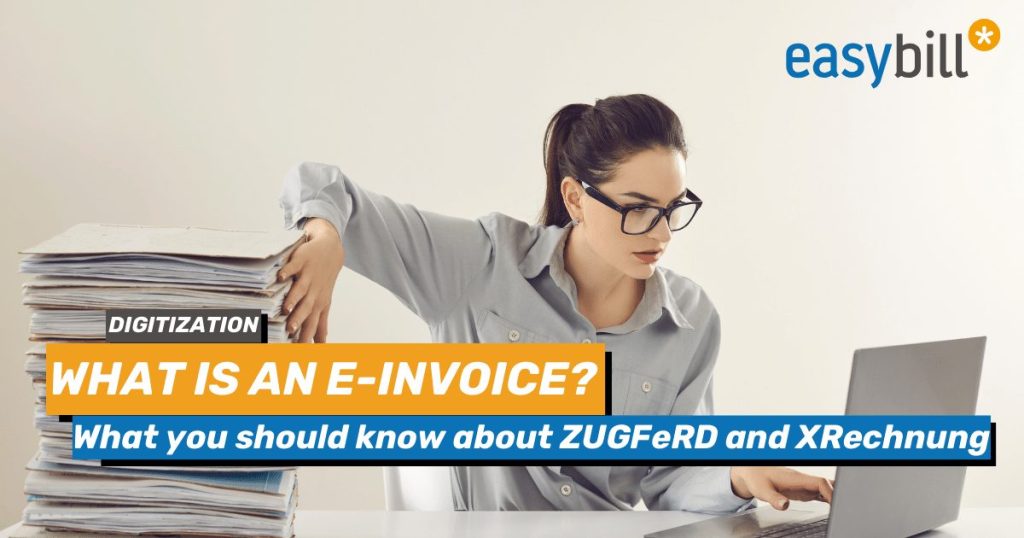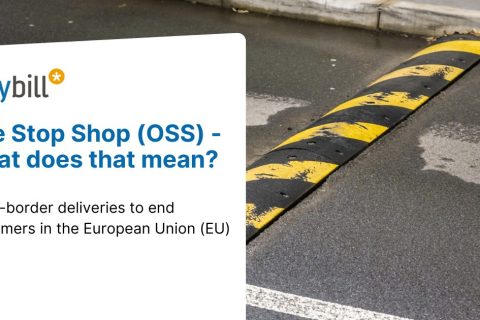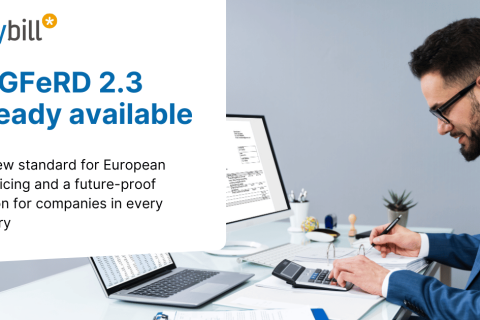
Everyone is already talking about it: e-billing is coming and will be introduced in stages from 2025. Many are tearing their hair out, but what exactly does e-billing actually mean? Is it really such a big change or does it all just sound more dramatic than it actually is? In our blog, we also explain the differences between the ZUGFeRD and XRechnung e-invoice formats.
In today’s digital world, electronic invoices (e-invoices) are increasingly becoming the standard. Of course, this is all subject to sufficient transition periods so that every business can actually make the switch to e-invoicing.
But what exactly are e-invoices and what are terms such as ZUGFeRD and XRechnung all about? In this article, we will look at these questions in detail and give you a comprehensive insight into the world of electronic invoicing.
What is an e-invoice?
An e-invoice is an invoice that is created, sent, received and processed electronically, in contrast to conventional paper invoices. It consists of structured data that is machine-readable and enables the invoice process to be processed automatically. This reduces errors, shortens processing time and increases efficiency. They are not only more efficient, but also more environmentally friendly and cost-effective than conventional paper invoices.
Why are e-invoices important in B2B?
E-invoices offer numerous advantages for companies and organizations. They not only save time and costs, but also contribute to sustainability by reducing paper consumption. In addition, they improve the transparency and traceability of transactions and facilitate compliance with legal requirements in the area of invoicing.
In future, e-invoices will also make it easier for the relevant tax office to record taxes correctly. This will further limit tax fraud or tax omissions and make it much easier for the tax office to detect them. Cash registers at the point of sale have already shown that the move towards digital data brings considerable advantages.
ZUGFeRD: The standard for electronic invoices in Germany
ZUGFeRD stands for “Zentraler User Guide des Forums elektronische Rechnung Deutschland” and is a standard for electronic invoice exchange in Germany. It combines a PDF file with embedded structured data in XML format, which makes it possible to read the invoice both visually and automatically. ZUGFeRD therefore offers a flexible solution that is suitable for large companies as well as small and medium-sized enterprises.
easybill currently supports the ZUGFeRD format in two different versions. Here you have the choice of agreeing with your client which format is desired and required.
XRechnung: The European standard for electronic invoices
XRechnung is the German standard for electronic invoices within the framework of the European Directive 2014/55/EU on electronic invoicing for public contracts. It is a semantic data model based on the European standard EN 16931 and promotes uniform electronic invoicing within the European Union.
XRechnung ensures that electronic invoices are interoperable and are accepted by all contracting authorities in Germany. For pure B2B business, XRechnung will probably not be considered as a standard, as XRechnung also requires some mandatory information that is not available per se in everyday business.
Is your client a public authority or institution? Then easybill already has the perfect solution for you. When creating your invoice, select one of our XRechnung formats, enter the client’s data and conveniently send the e-invoice directly to the service recipient.
Conclusion: The future of invoicing is digital
In an increasingly digital world, e-invoices will be indispensable. They offer numerous benefits for companies, organizations and authorities, including increased efficiency, cost savings and environmental protection. Standards such as ZUGFeRD and XRechnung will further simplify and standardize electronic invoicing, leading to improved interoperability and efficiency in accounting. It is therefore time to familiarize yourself with e-invoicing and take advantage of its benefits in order to invest in a digital and sustainable future.
If you are not already an easybill user, take advantage of the transition period for a convenient and stress-free changeover of your systems. If you have any questions, the easybill support team is always there for you.
Read also:
Master e-invoicing: A how-to guide for tax advisors and clients
E-invoices made easy: A guide for SMEs
Create e-invoices in easybill (ZUGFeRD/XRechnung) – german help center




